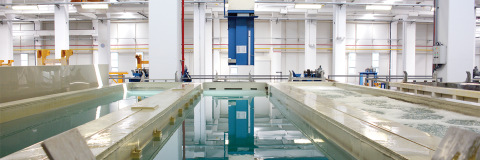Aluminum has long been the substrate of choice for connectors in the aerospace industry based on its strength-to-weight ratio, high machinability and relatively low cost. These connectors are used in various applications, from mechanical systems to structural components, especially in electrical interconnect assemblies, making them a critical factor in design and manufacturing. Coating systems are often applied to these connectors to improve performance and functionality and meet rigorous standards and specifications, ensuring aircraft systems’ safety and reliability. A commercial jetliner can contain upwards of 10,000 circular connectors that provide power to multiple systems, including avionics, flight control, power control and in-flight entertainment systems. The MIL-DTL-38999 for plated connectors is the anchor of global circular interconnect technology and the preferred connector specification employed in various commercial and military applications.
The Rise of Composite Materials
While aluminum remains the primary substrate of use, manufacturers are exploring and using engineered plastics and composite materials with plated metal finishes. The primary target for moving towards composites and advanced plastic interconnect devices within aerospace is weight reduction, though this technology provides additional performance benefits. Plastics and composites offer significantly lighter substrates compared to aluminum, making them an ideal choice for OEMs looking to optimize the performance and range of their aircraft. For example, every 1 pound (454 g) of weight reduction on a commercial aircraft equates to ~$1 million in fuel cost savings over a plane’s lifespan. Interconnect devices, housings and other components can benefit from the reduced weight of plastics, and adding electroless and electroplated coatings to the surface can offer advanced performance characteristics. The coating layers can be tailored to meet specific needs, reducing cost in the processing stages while achieving the same or superior shielding, resistance/conductance and lightning strike performance (LSP) as similar aluminum components.
The desire to advance further into plastic and composite components has created a need for advanced plastics with unique and high-performing physical properties. Recent developments in plastic and composite technologies and manufacturing processes have rapidly expanded their use in aerospace systems. The need for lightweight components, coupled with required durability, fire resistance, strength and temperature operation ranges, has brought plastic resins including polyetheretherketone (PEEK), polyetherimide (PEI) and polyphenylene sulfide (PPS) to the forefront. These engineered plastics lead the way in manufacturability and performance standards through molding and rapid 3D printing processes. Applying current surface treatment methodologies to these complex resins has proven more difficult and costly for applicators, producing lower average yields compared to traditional ABS (acrylonitrile butadiene styrene) and ABS/PC (acrylonitrile butadiene styrene/polycarbonite) plastics. Additionally, these methods result in a lower bond strength between the plastic substrate and subsequent metal coatings making it more difficult to meet critical performance criteria, especially lightning strike requirements. However, innovations for plating on plastics, such as MacDermid Enthone’s evolve chrome-free etch technology, are pioneering a proven and sustainable path for the wide range of engineered plastics.
Plating on Plastics — Delivering Performance and Efficiency
Composite plastic components require surface processing to prepare the substrate material into a uniform structure most suitable for bonding the subsequent metallic coatings. Surface preparation is the most crucial step to meeting the rigorous standards for durability, cyclic thermal testing and adhesion testing. In meeting the stringent performance demands of the aerospace industry, many standardized and unique processes are employed to achieve the etched surface required for strong bonding of plated metallic coatings. Traditionally, this is achieved through high-cost and labor-intensive steps, including sand blasting, abrasive tumbling, spray or dip organo-metallic bonding coatings or the widely used hexavalent chrome etching, depending on plastic types and applicator capabilities.
Hexavalent chrome, a known substance of concern, and its PFAS-containing additives have been at the center stage of targeted replacement in industrial applications for years, with notable regulations being implemented within the electroplating industry. This sector has set goals to improve the health and safety of the workforce, air quality, and waste streams. For example, MacDermid Enthone’s evolve chrome-free etch technology has been proven to eliminate these concerns and provide a future-proof, sustainable process free of hazards. This technology is designed to meet regulations and has been used on electroplated aerospace plastic interconnect devices for over a decade.
The adaptive nature of this hexavalent chromium-free technology enables the same high efficiency and uniform surface preparation an applicator expects in a stable and sustainable process. The benefits of adopting evolve go beyond just hazard and health risk reductions, enabling highly controlled and tailored etching of both traditional plastics (ABS and ABS/PC) and new engineered plastics (PEEK, PEI and PPS) with or without glass-filled or carbon-fiber reinforcement. This equates to a single-system operation for all surface preparation needs. Implementing chrome-free etch processes requires minimal changes to the manufacturing process, making transitions easy through the utilization of traditional process knowledge.
Meeting Lightning Strike Test Requirements with Electroless Nickel
Legacy aluminum MIL-DTL-38999 connectors employ electroless nickel as an intermediate or final finish to provide corrosion protection of the aluminum substrate. Electroless nickel plays a critical role as a barrier layer designed to preserve the conductive performance of the connector assembly in corrosive environments. The electrical resistance allowance for a MIL-DTL-38999 connector assembly is highly restrictive, with a maximum of 2.0 milliohms "as-plated" and 5.0 milliohms resistance after neutral salt spray testing. The anticorrosion performance of the electroless nickel layer is especially critical in providing lightning strike protection of the connector assembly in commercial and military aerospace applications. A connector must meet the lightning strike standard (EIA/ECA-364-75) and withstand up to 200 kA while maintaining its structural integrity, conductive performance, and EMI shielding effectiveness. Mid-phosphorous (7-9% P) and/or high-phosphorous (10-12% P) electroless nickel deposits are extensively used on MIL-DTL-38999 connectors as the anticorrosion and conductive properties of these deposits meet specification requirements.
For MIL-DTL-38999 connectors utilizing nonconductive substrates such as PEEK and PEI Ultem, the electroless nickel deposit serves a slightly different role. Because of the nonconductive nature of composite substrates, a copper metallization step is used to achieve conductive functionality. In this application, electroless nickel provides corrosion protection of the copper layer to preserve the conductive continuity of the connector. Historically, aerospace connector OEMs have struggled to meet the lightning strike performance requirements using nonconductive substrates. Protecting the integrity of the copper conductive layer and maximizing its adhesion to the nonconductive substrate are keys to achieving consistent lightning strike results for connectors. Mid-phosphorous electroless nickel is typically the preferred process for plastic and composite connector applications. The higher percentage of nickel in mid-phosphorous electroless nickel deposits also produces slightly better conductive properties when compared to its high-phosphorous counterpart.
Innovations in pretreatment and electroless nickel technologies are advancing the adoption of plastic and composite connectors as a viable, cost-saving alternative to legacy aluminum connector technologies. Additionally, as is the case within the electric vehicle market, these new approaches are being leveraged in other applications to realize the same benefits as the aerospace industry.
Read the full article, available now on pfonline.com











